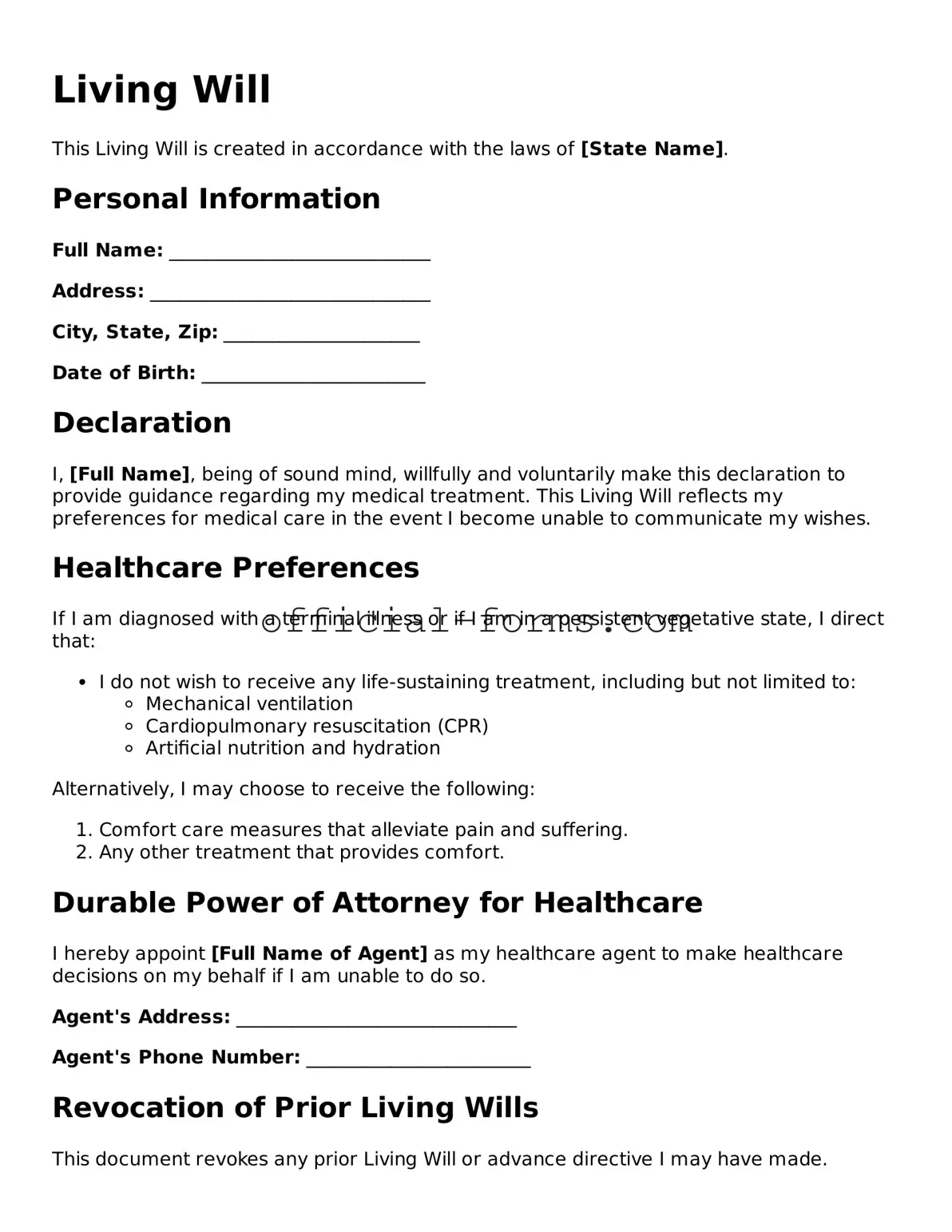Creating a Living Will is an important step in planning for your future healthcare preferences. However, many individuals make common mistakes when filling out this form. Awareness of these pitfalls can help ensure that your wishes are clearly communicated and respected.
One frequent mistake is not being specific enough about your medical preferences. It's essential to clearly outline your wishes regarding treatments, life support, and other medical interventions. Vague language can lead to confusion and may not reflect your true desires.
Another common error is failing to discuss your Living Will with family members or healthcare providers. Open communication can prevent misunderstandings and ensure that everyone involved understands your wishes. It’s crucial that your loved ones are aware of your decisions so they can advocate for you if necessary.
Many people also neglect to update their Living Will as circumstances change. Life events such as marriage, divorce, or significant health changes may impact your preferences. Regularly reviewing and updating your document ensures that it remains relevant to your current situation.
Some individuals mistakenly believe that verbal agreements are sufficient. A Living Will must be documented in writing to be legally recognized. Relying solely on conversations can lead to misunderstandings and may not hold up in critical situations.
Additionally, people often overlook the importance of signatures and witnesses. Most states require that your Living Will be signed by you and witnessed by others to be valid. Failing to meet these requirements can render your document ineffective.
Another mistake is not considering state-specific laws. Each state has its own regulations regarding Living Wills, including the required language and format. Familiarizing yourself with these laws can help ensure that your document is legally binding.
Many individuals also forget to designate a healthcare proxy. This person will make decisions on your behalf if you are unable to do so. Clearly naming a trusted individual in your Living Will can provide peace of mind that your preferences will be honored.
Some people may feel overwhelmed and rush through the process. Taking the time to carefully consider your wishes and complete the form accurately is crucial. A rushed job can lead to errors that may complicate your healthcare decisions later on.
Lastly, individuals sometimes ignore the importance of clarity in their language. Using straightforward and unambiguous terms can help prevent confusion. Avoiding complex medical jargon will make your intentions clear to those who may need to interpret your wishes in the future.
By being mindful of these common mistakes, you can create a Living Will that accurately reflects your desires and provides guidance for your loved ones and healthcare providers. Ensuring that your wishes are clearly articulated and legally recognized is vital for your peace of mind.
